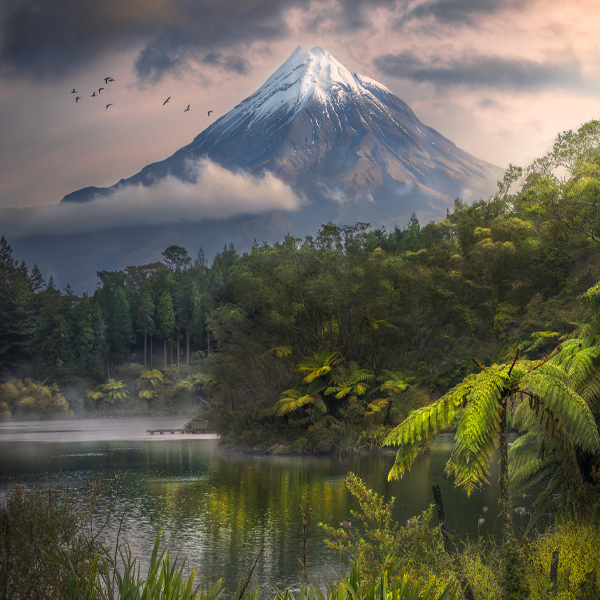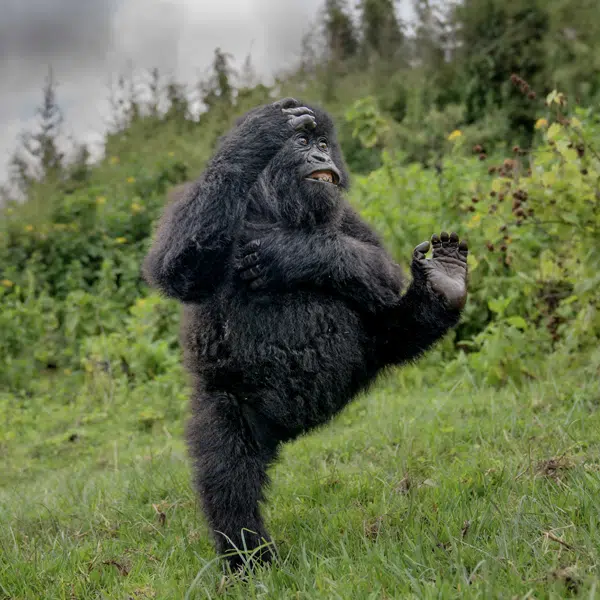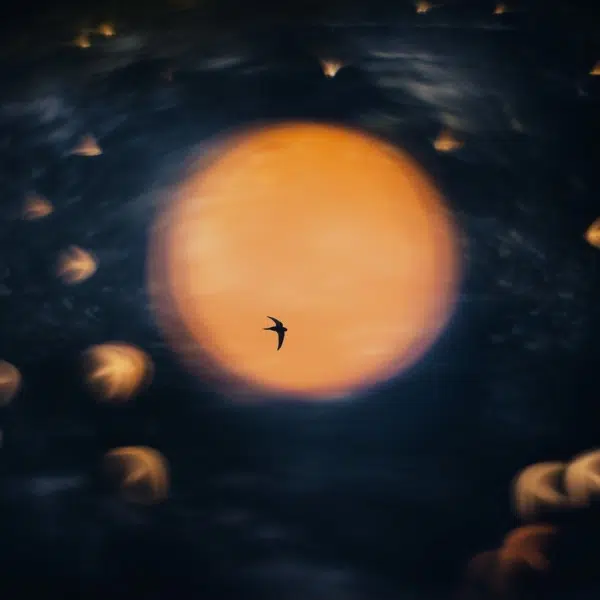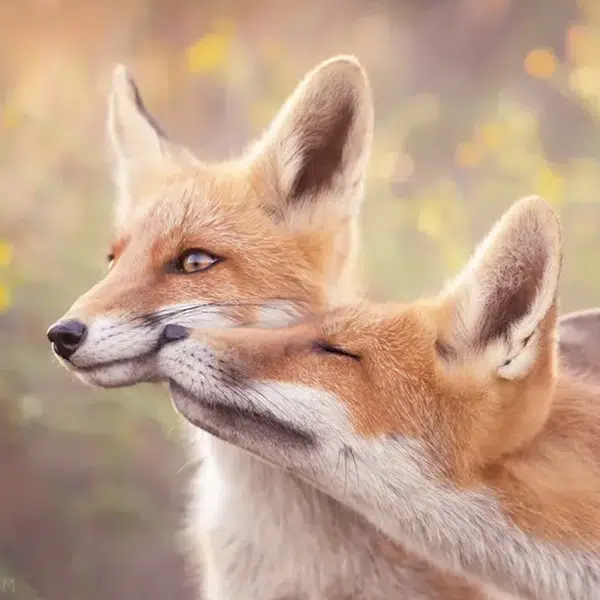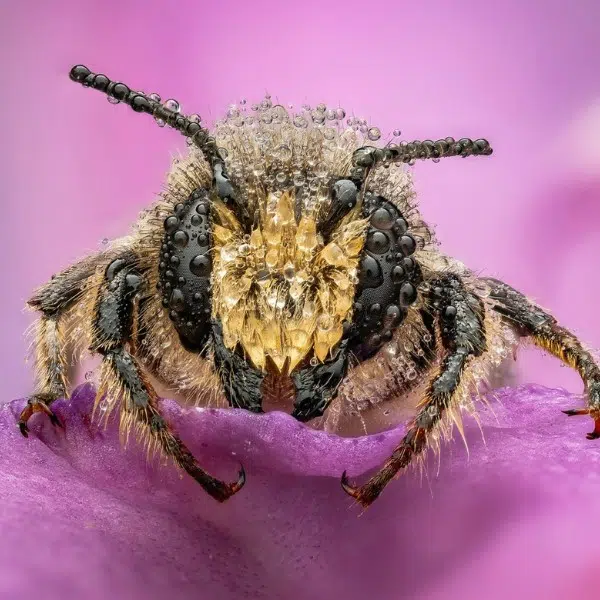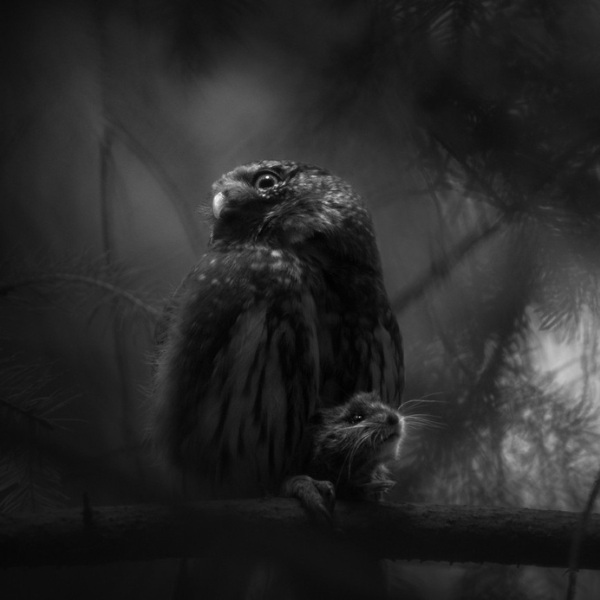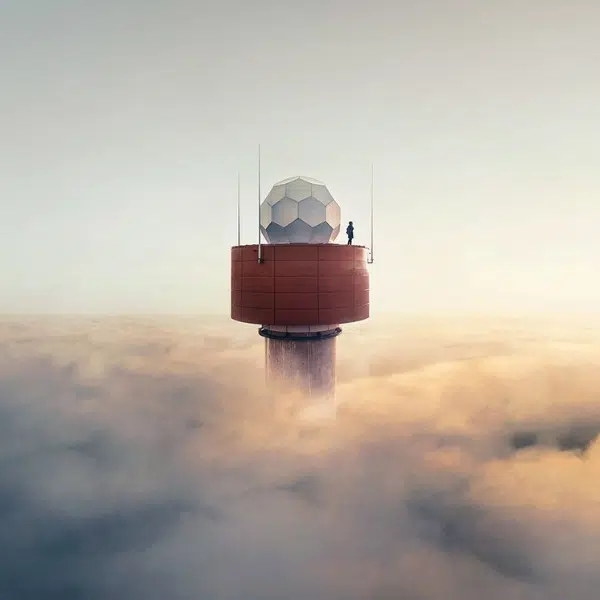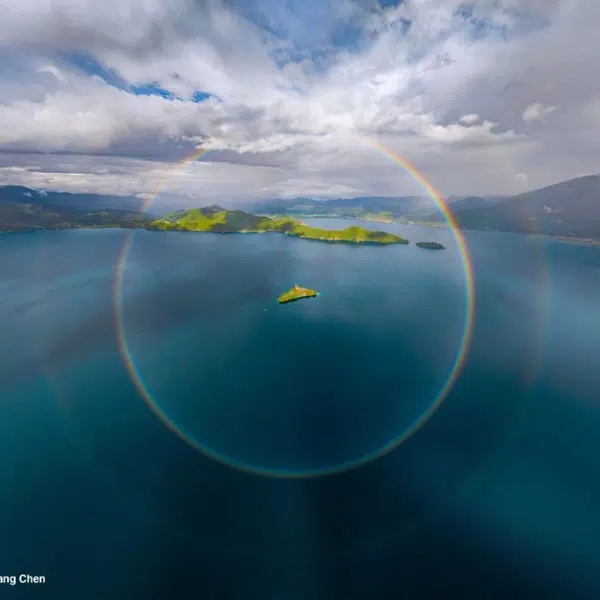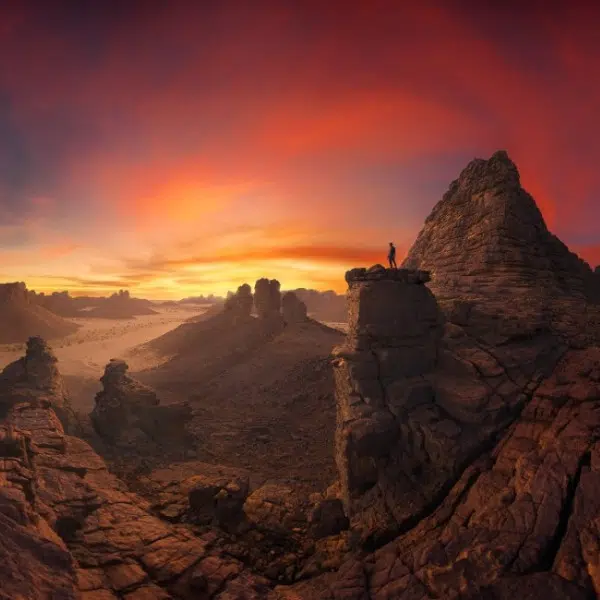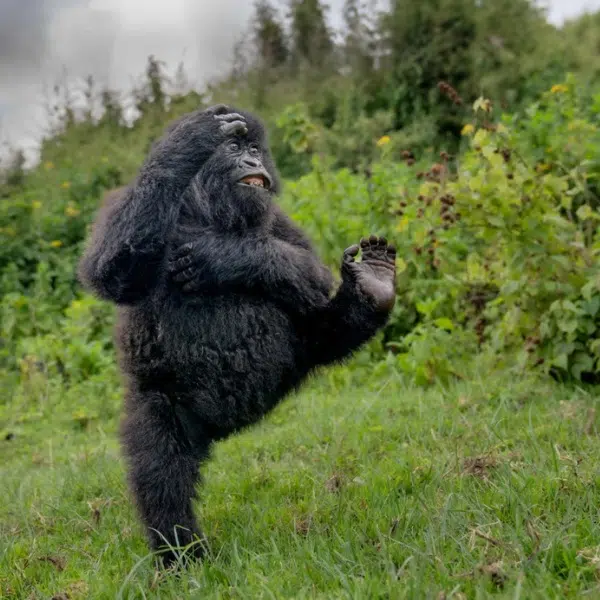
“In the Forest of the Monarchs” by Jaime Rojo (Spain). Winner, Overall Winner EWPY 2024.
“Rojo captured this spectacular shot in Mexico’s El Rosario butterfly sanctuary while on assignment for National Geographic Magazine. Every autumn, millions of monarch butterflies (Danaus plexippus) travel thousands of kilometers from North America to overwinter in the branches of oyamel firs (Abies religiosa). The dense clustering of butterflies and the protection of the tree canopy provide a crucial microclimate for their survival. However, even small changes to the forest can disrupt this delicate balance.”
Jaime Rojo's image of an incredible butterfly sanctuary rose to the top of 18,000 photographs submitted to the 2024 European Wildlife Photographer of the Year contest. Organized by the German Society for Nature Photographers (GDT), the contest honors the talents of Europe's wildlife photographers.
In the Forest of the Monarchs won Rojo the overall prize and was captured while the photographer was on assignment for National Geographic Magazine. By capturing the fragile ecosystem of Mexico's El Rosario butterfly sanctuary, home to millions of migrating monarch butterflies, Rojo puts the plight of these insects into focus.
“The future of these butterflies, like that of so many other species, is threatened,” shares Sabine Riewenherm, president of the German Federal Agency for Nature Conservation and patron of the competition. “Monarch habitats are in peril: Intensive agriculture combined with the use of herbicides is destroying the milkweed plants essential for their voracious caterpillars, illegal logging is destroying their roosting sites, and increasing storms in winter-related to climate change are causing monarchs to perish en route.”
Rojo's win was one of many awards handed out by GDT. The international jury also named nine category winners and two special prize winners, including the Rewilding Europe Award and the Fritz Pölking Award. Spanish photographer Hector Cordero won the Fritz Pölking Award, which is dedicated to nature photography stories and portfolios, for his work on the impact of light and glass on migratory birds.
Scroll down to see more of the winners and finalists, and then view the entire winner's gallery on the GDT website.
Here are the winners of the 2024 European Wildlife Photographer of the Year contest.
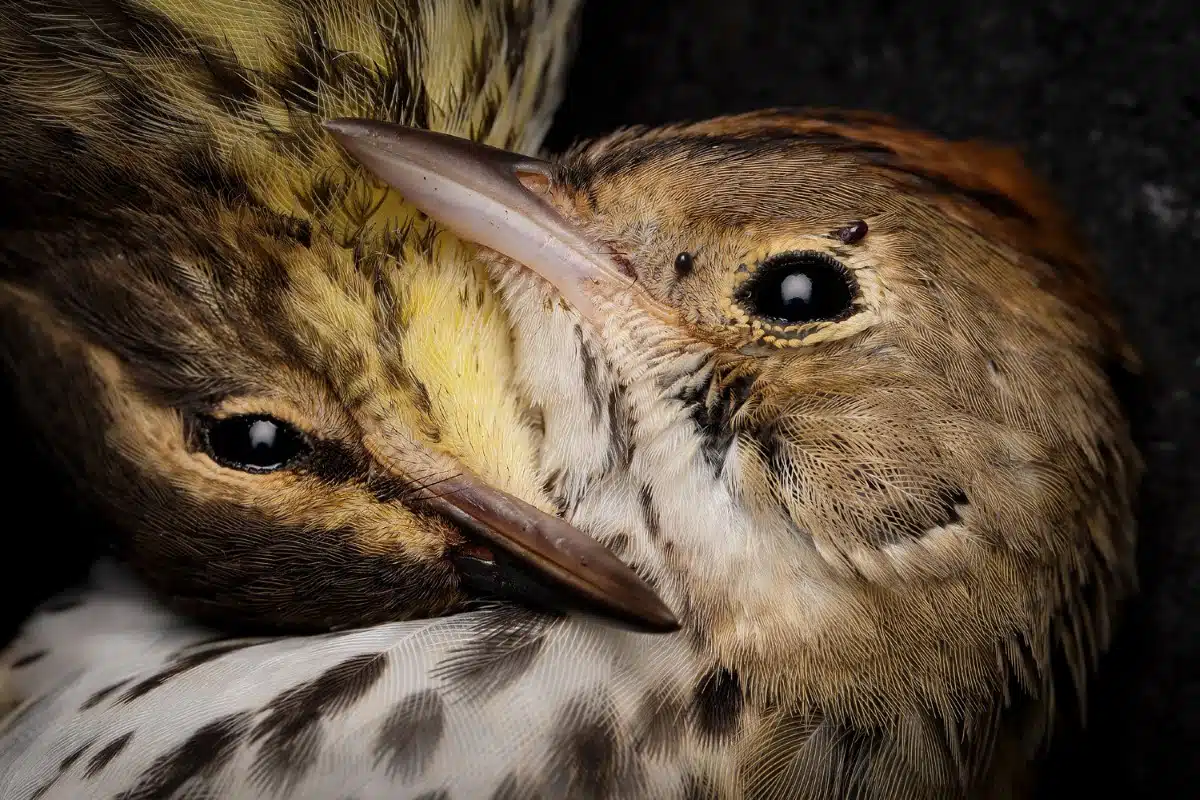
Hector Cordero (Spain). Winner, Fritz Pölking Prize 2024.
“Hector has been working on his documentary about the dangers faced by migratory birds for the past four years. In the United States alone, approximately 624 million birds die annually due to collisions with glass surfaces. One of the epicenters of such collisions is New York City, where scientific studies estimate that up to 230,000 birds perish each year on the streets of the city that never sleeps.”
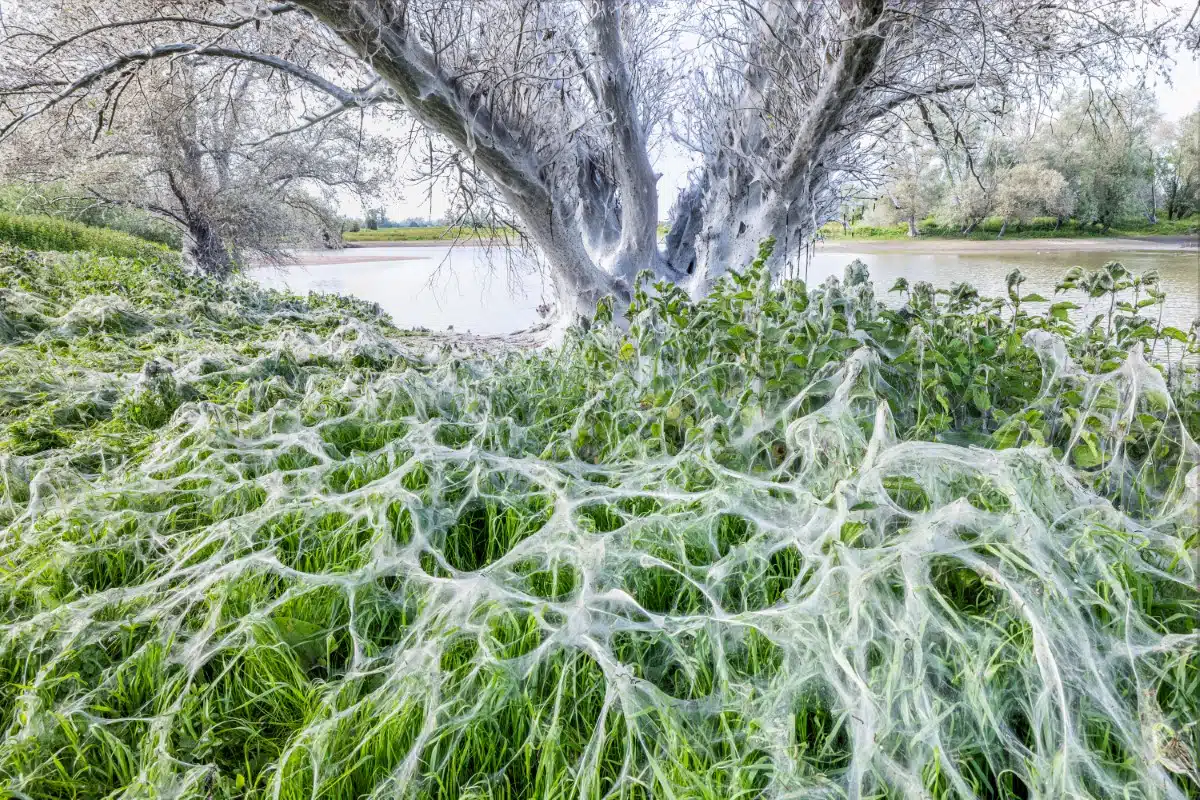
“Christo was here” by Theo Bosboom, GDT (The Netherlands). Winner, Other Animals.
“In June 2023, I heard about an explosive proliferation of willow ermine moth caterpillars (Yponomeuta rorrellus) along the river Waal near Boven-Leeuwen, not far from my home town, Arnhem, Netherlands. I drove to the location the same evening and couldn't believe my eyes: a giant old willow tree and much of the surrounding vegetation wrapped in white silk. And millions of caterpillars crawling all around. It’s obvious why the work of these caterpillars is often compared to that of the famous artist Christo who covered the Reichstag in Berlin and countless other buildings as well as trees in silk. After a few months, the webs disappeared and the willows sprouted new foliage – the caterpillar invasion left no permanent damage.”
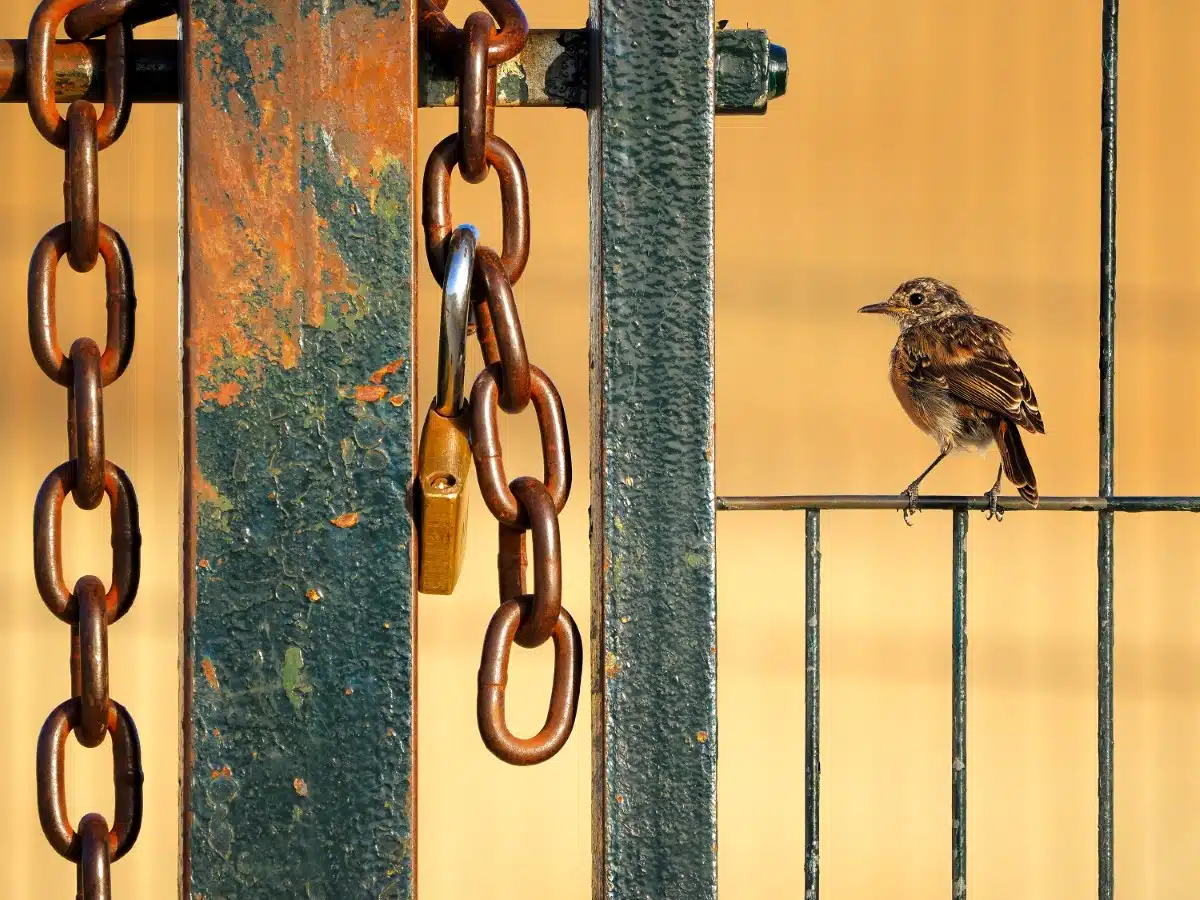
“The young guardian” by Alberto Román Gómez (Spain). Winner, Young Photographers | 14 years and under.
“On the day this photo was taken, my father picked me up after school and we drove to an agricultural area on the edge of the Sierra de Grazalema Nature Park. We were able to take some nice pictures, and, on the way home in the car, I saw a young stonechat sitting on a fence and repeatedly flying to the ground to prey on small insects. One time, it returned to perch on the fence right next to a lock—as if to stand guard.”
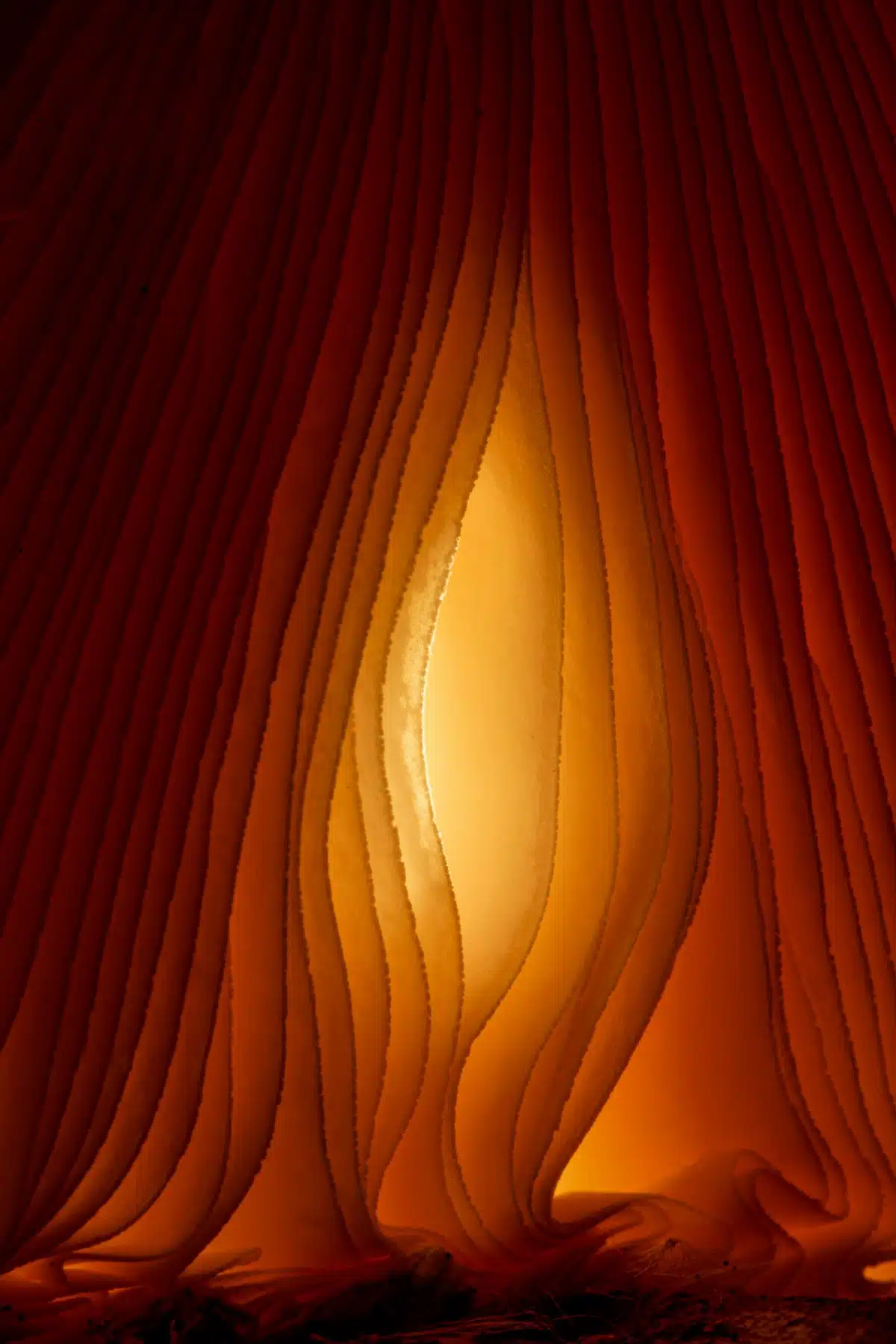
“Curtain” by Svetlana Ivanenko (Russia). Winner, Plants and Fungi.
“During a visit to the Lossiny Ostrov National Park (Russia), I found several parasol mushrooms (Macrolepiota procera). The pronounced lamellae under the cap of one of the mushrooms immediately caught my attention. With the help of a torch, I wanted to emphasize their elegant structures. I deliberately underexposed the shot slightly to emphasize the beautiful curves of the lamellae. The result reminds me of the front curtain in a theater.”
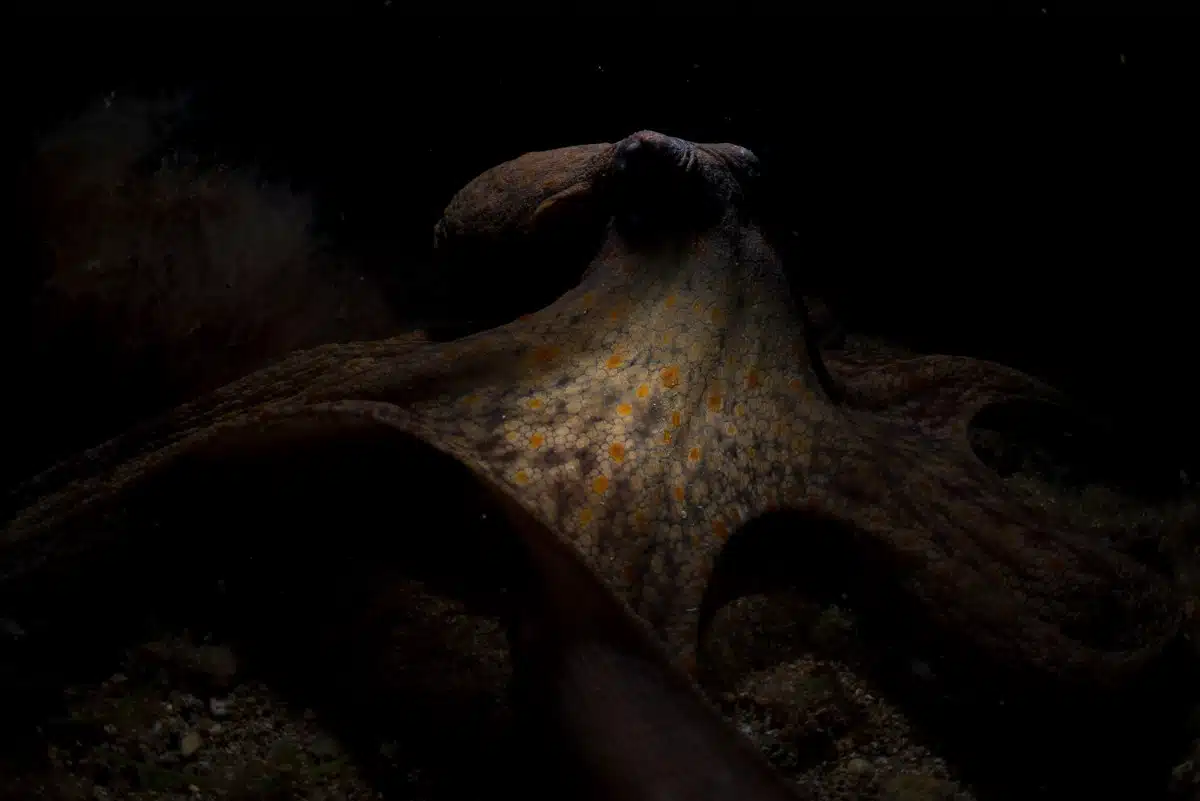
“Night crawler” by Angel Fitor (Spain). Winner, Underwater World.
“A common octopus (Octopus vulgaris) crawls across the seabed at night in search of prey. Thanks to a sophisticated combination of tactile abilities and nocturnal vision, octopuses are among the most effective nocturnal hunters in the sea. Everything about how octopuses perceive the world is beyond our imagination. In addition to their unique eyes, octopus skin contains special light-sensitive proteins called opsins that allow the entire body to perceive light. Given this, it is not surprising that these animals use more than two-thirds of their brain for visual processing. Although colour-blind, octopuses use polarized vision to improve contrasts and detect enemies, conspecifics and even camouflaged prey. Last but not least, the position of the eyes on an octopus' head and its horizontal pupils mean that the animals have 360° vision with no “blind spots”. Who can beat that?”
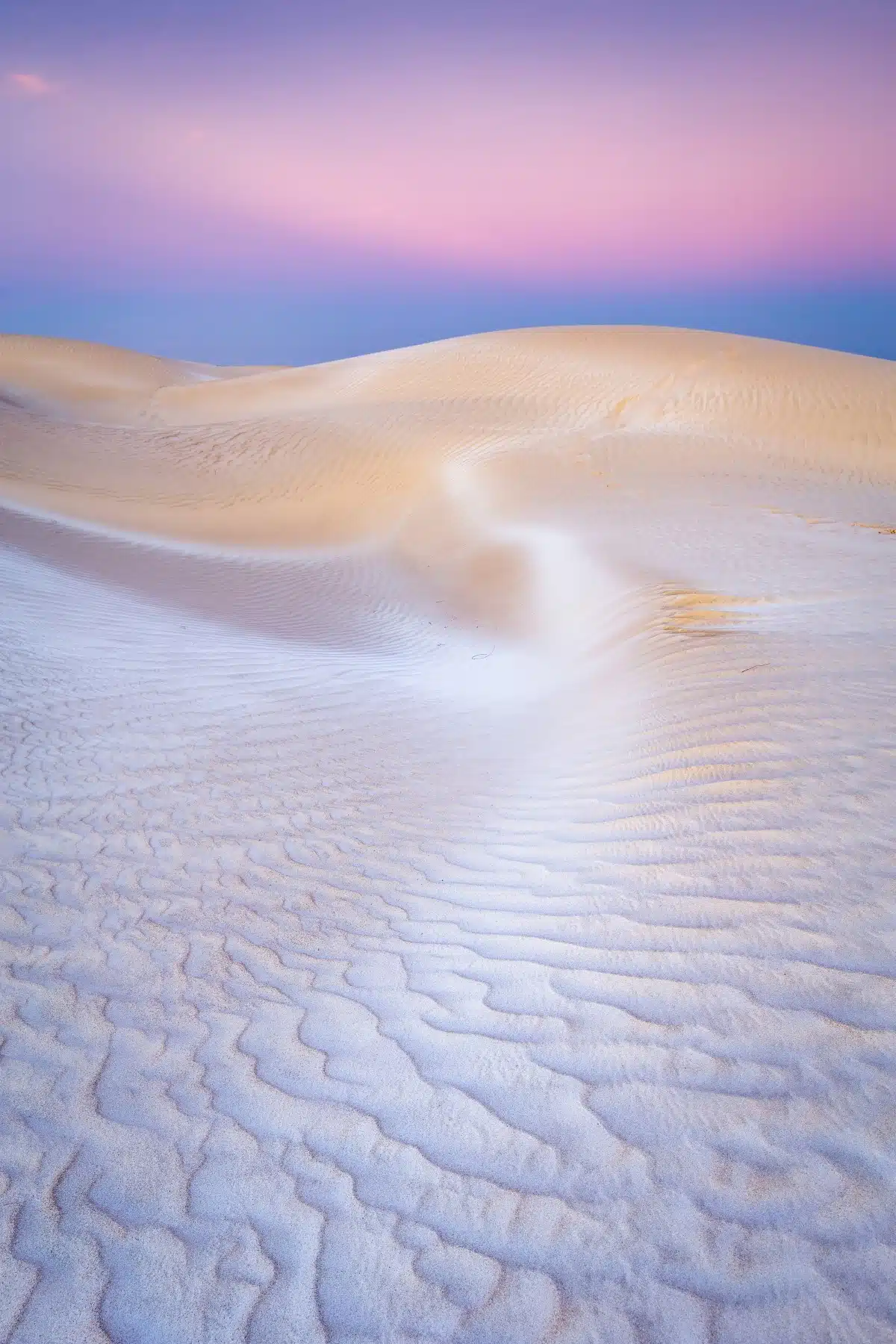
“Blaze of colors” by Check My Dream (France). Winner, Landscapes.
“In December 2019, I visited the scenic and fascinating Sultanate of Oman. For me, one of the most exciting places was the famous Sugar Dunes on the coast of the Arabian Sea, named after the white color of the sand. The idea was to create a harmonious image of the intriguing colour gradient that extended from the softly tinted sky to the ripples in the sand.”
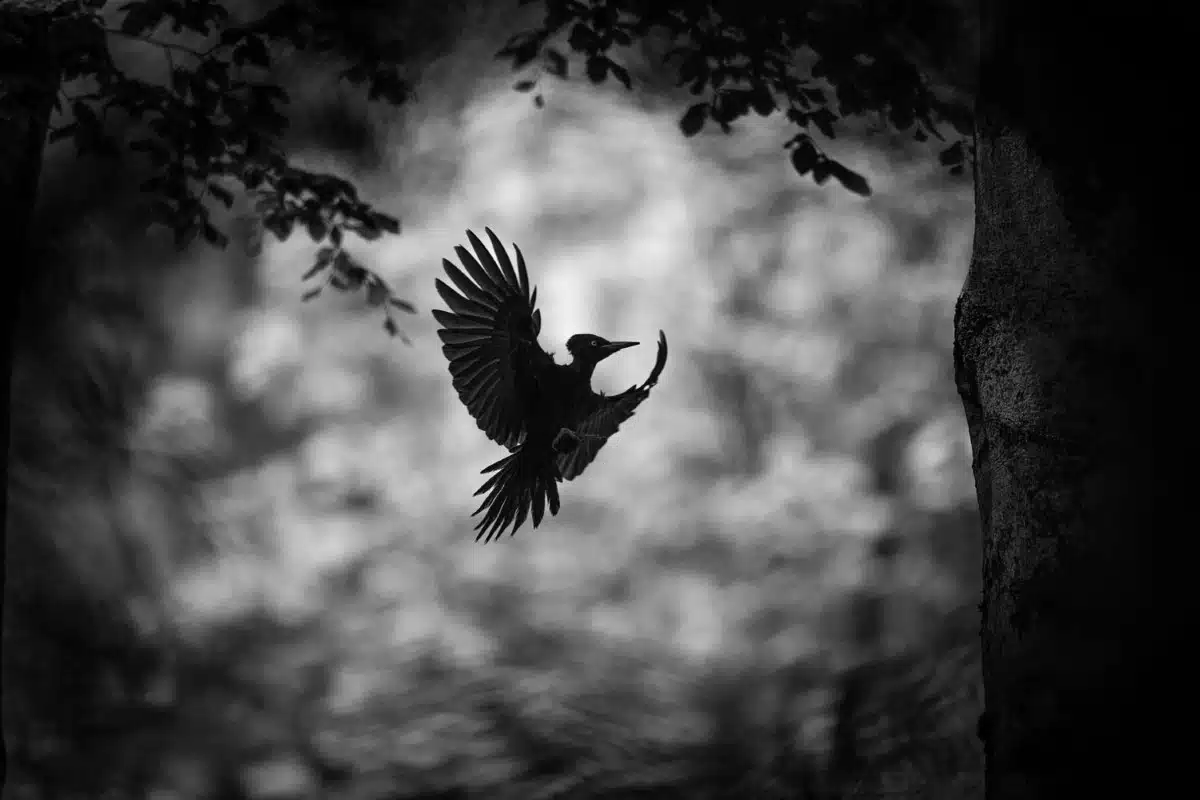
“Approach” by Luca Melcarne (France). Winner, France.
“After observing a pair of nesting black woodpeckers (Dryocopus martius) for several days, I decided to set up a camouflage hide at a suitable distance. I installed the hide behind a fir tree so as not to disturb the birds and at the same time make my image visually more exciting by photographing through the branches. Once I had found a good angle, I just had to wait for the adult birds to appear. Here, you can see the male approaching with food for the hungry offspring in the brood cave.”
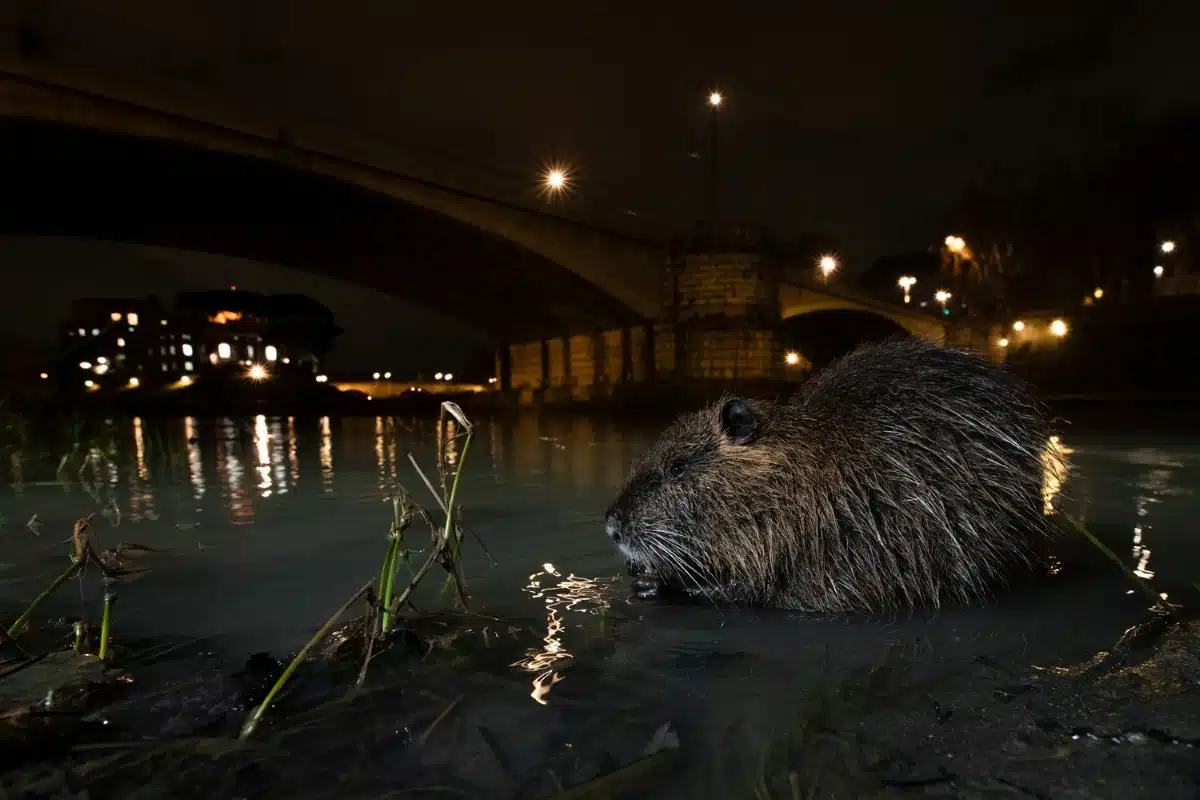
“Urban Jungle” by Gianluca Damiani (Italy). Winner, Fritz Pölking Junior Prize.
“In urban areas, wild animals must make a wide range of behavioral and physiological adjustments to be able to exploit this expanding habitat type. While many species are negatively affected by increasing urbanization, others are capable of behavioral and genetic adaptations to large metropolises such as Rome.”
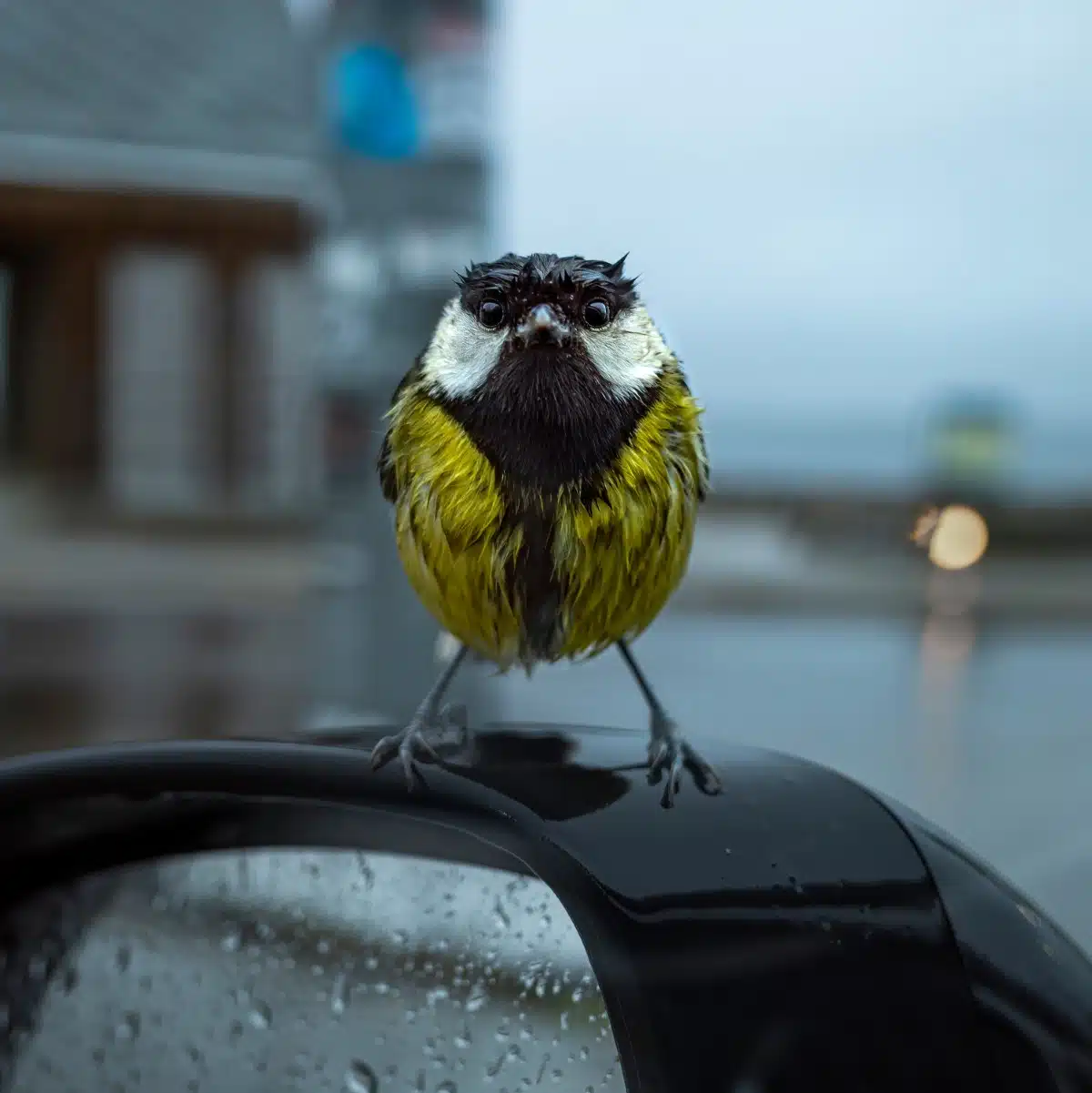
“Angry bird” by Kjell Vikestad (Norway). Runner-up, Birds.
“At the ferry terminal in Hella, Norway, the birds have become accustomed to being fed bread crumbs by waiting motorists. Conditioned to be fearless, they often land directly on cars hoping for a small snack. Although I had nothing to offer, I took the opportunity to take a few shots of this wet and hungry great tit (Parus major).”
Organized by the German Society for Nature Photographers, the contest had 18,000 entries from 38 countries.
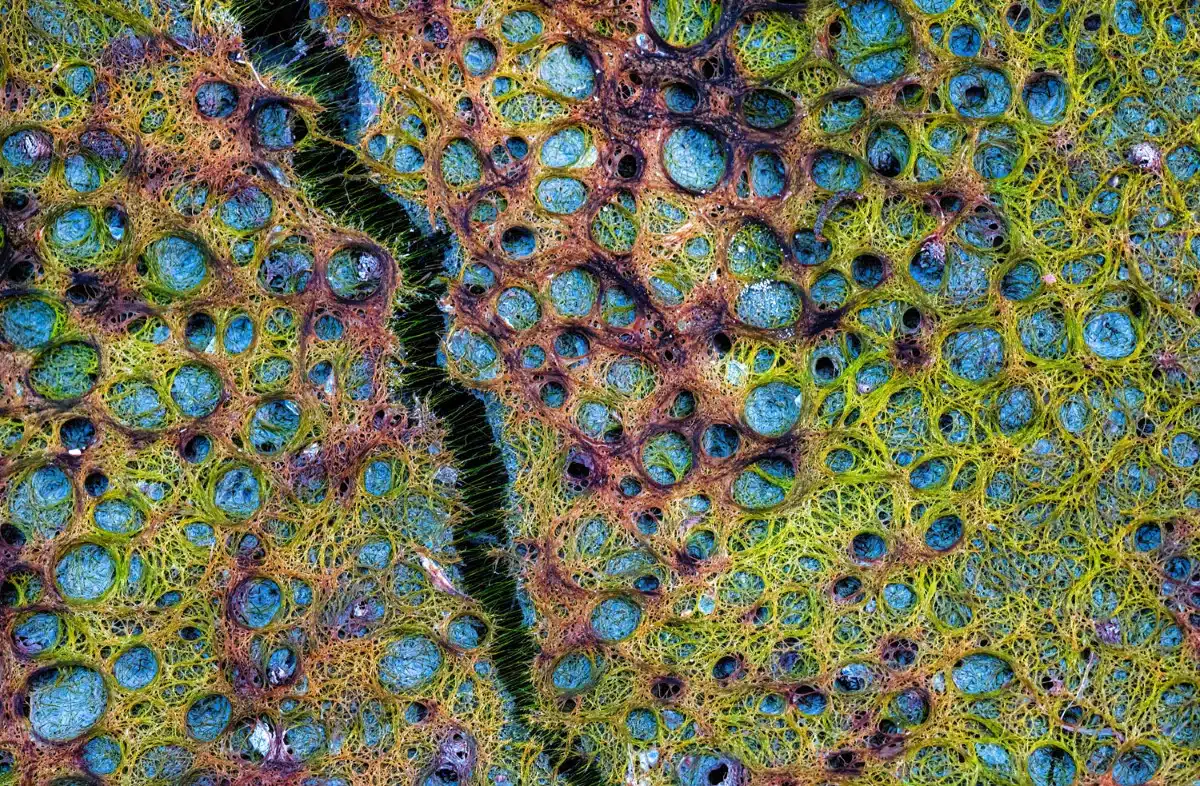
“Algae pizza” by Csaba Daroczi (Hungary). Highly Commended, Plants and Fungi.
“On a hike through the Mikla Puszta in Kiskunság (Hungary), I noticed a dried-up puddle with interesting formations. After a rainfall event, filamentous green algae had thrived in a depression. As the water evaporated, the algae formed colorful and geometric patterns on the mud. Because I didn't have a tripod with me and the light was low, I had to take numerous pictures to get at least one in-focus shot.”
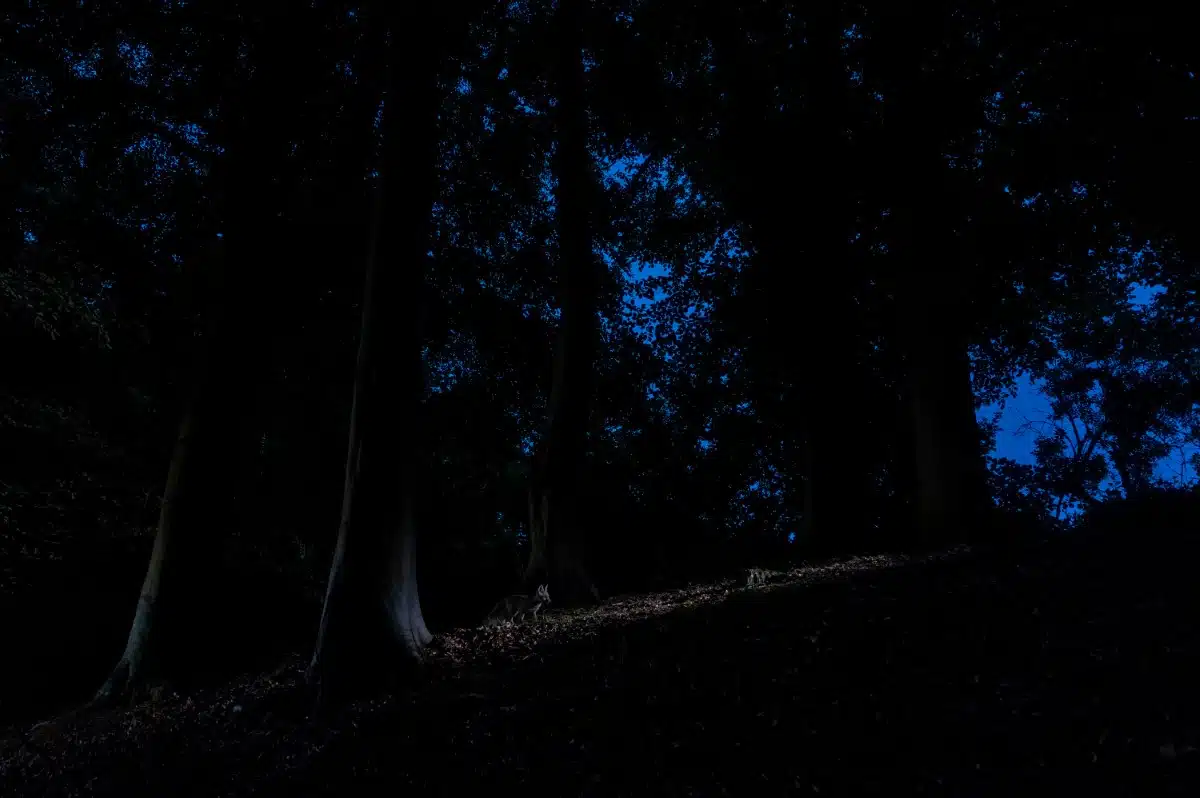
“Twilight wanderer” by Robert Canis (United Kingdom). Winner, Mammals
“In a deciduous woodland in North Kent, England, a young red fox (Vulpes vulpes) explores the surroundings of its den. As part of a six-year project to document the grounds and wildlife of a castle 15 kilometers from where I live, I installed a camera trap on a path at the edge of the wood. The hillside location allowed me to capture the giant beech trees as well as the cautious animal against the twilight sky.”
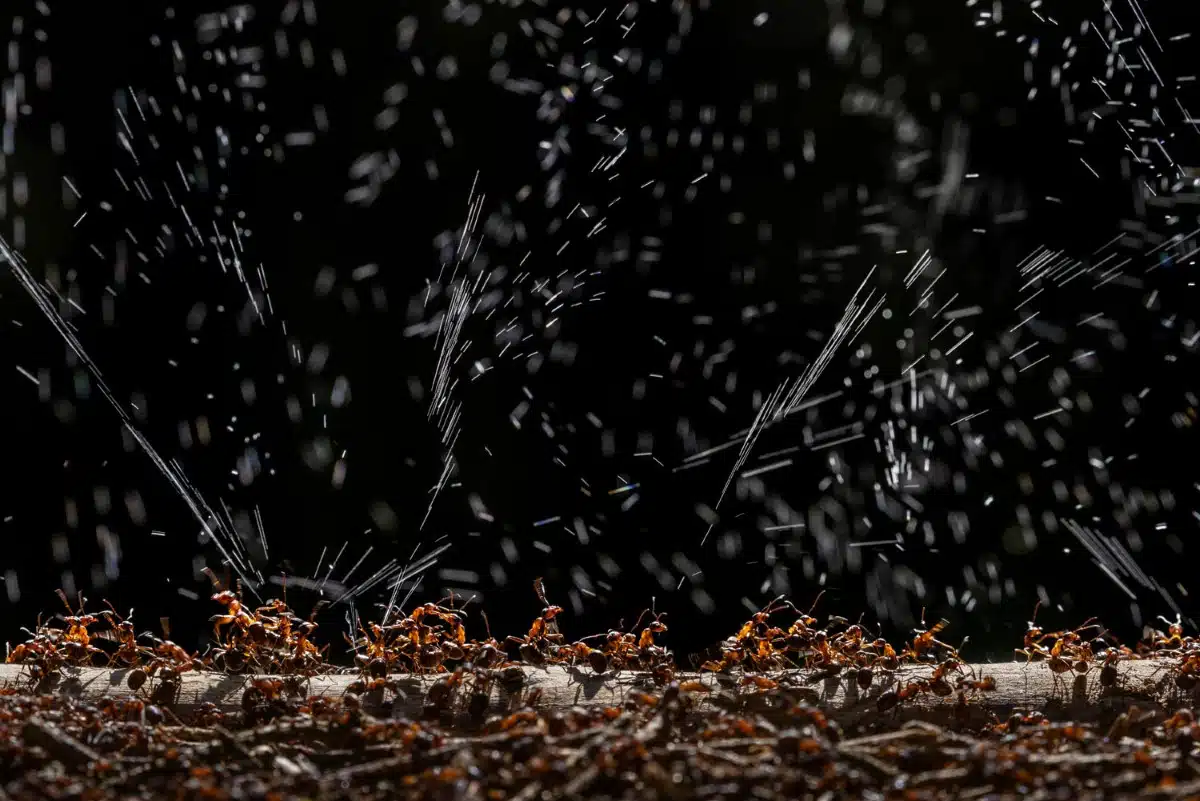
“Fireworks” by Ingo Arndt, GDT (Germany). Runner-up, Other Animals.
“This idea for this image had been in the back of my mind for some time. I needed an anthill with both backlighting and a dark background. My wife then waved a cloth attached to a telescopic pole over the ants causing them to defend themselves by spraying formic acid. Among the thousands of shots I took, there was only one “perfect” image. Wood ants (Formica ssp.) are protected by law in Germany, which is why I was working with a special photo licence.”
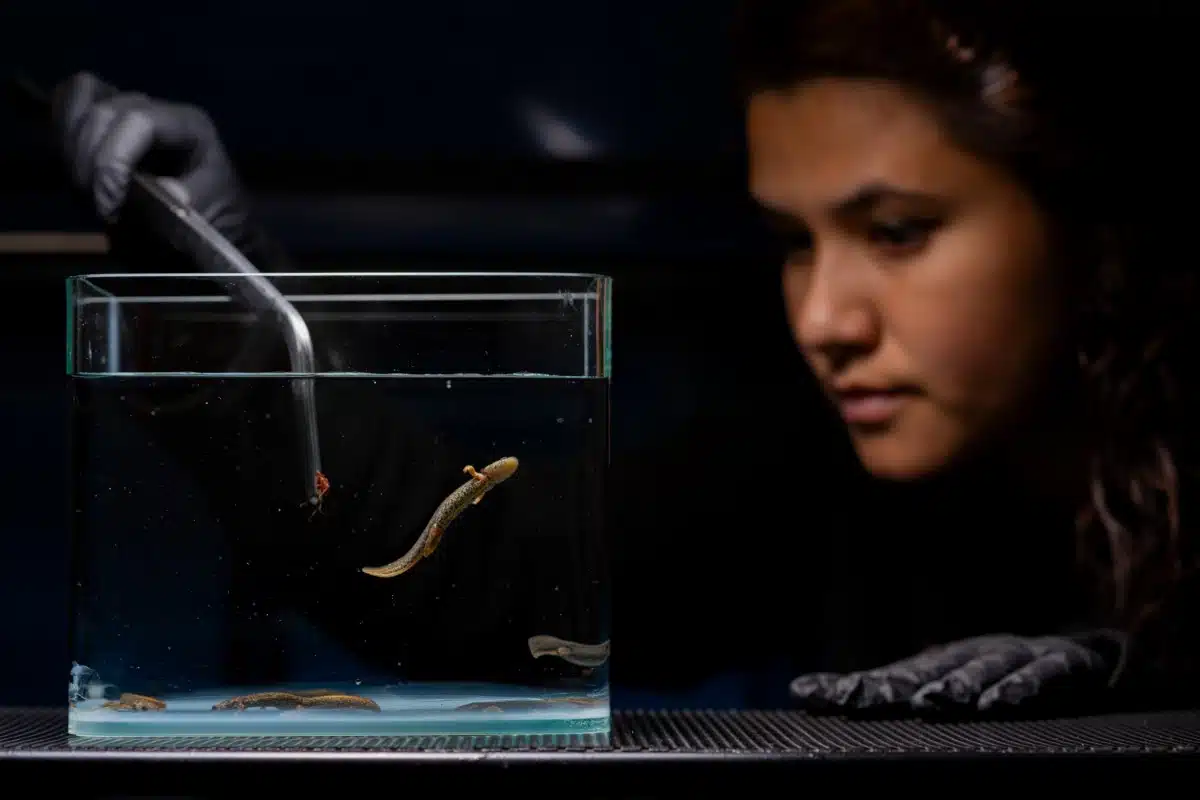
“Nurturing hope” by Jaime Culebras (Spain). Winner, Man and Nature.
“Endemic to the Montseny Mountains in Spain, the Montseny brook newt (Calotriton arnoldi) is probably the most threatened amphibian species in Europe. It is estimated that populations of this species could decline by 80% in less than one to two decades due to severe droughts and water extraction in the few streams where it still occurs. An important ex situ breeding initiative funded by an EU-funded Life Programme is the only hope for the survival of this amphibian. The Calafell Environmental Research and Education Centre (CREAC) is part of this ambitious conservation programme. Andrea Jhulyana, the center's biologist, feeds the hundreds of newts kept at the centre with great dedication. The animals will eventually be released into their natural habitat.”
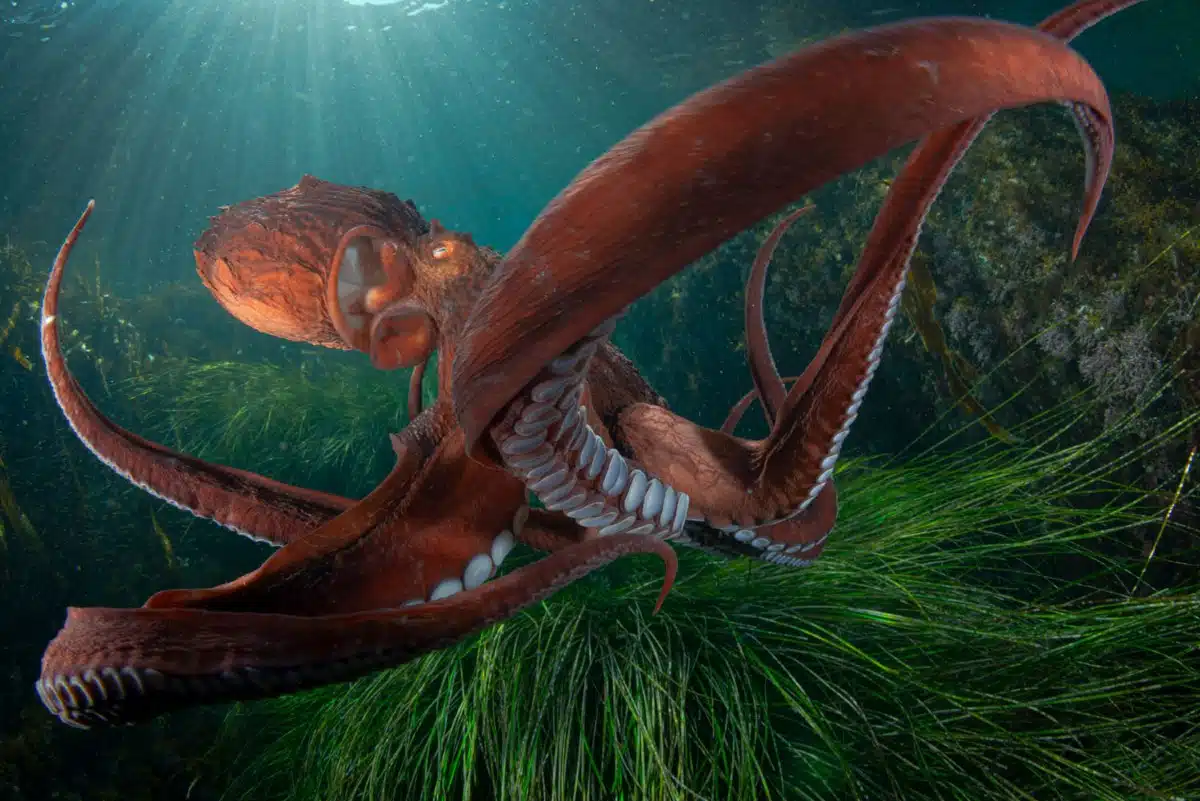
“Giant Pacific octopus” by Andrey Shpatak (Russia). Highly Commended, Underwater World.
“Every year in autumn when the water cools down to around five degrees Celsius, giant Pacific octopuses (Enteroctopus dofleini) migrate to shallow waters. During a morning dive near the Russian town of Rudnaya (Sea of Japan), I came across this imposing individual. Although the octopus fled immediately, I did manage to get a few shots against the backdrop of bright green tufts of seagrass (Zostera marina).”
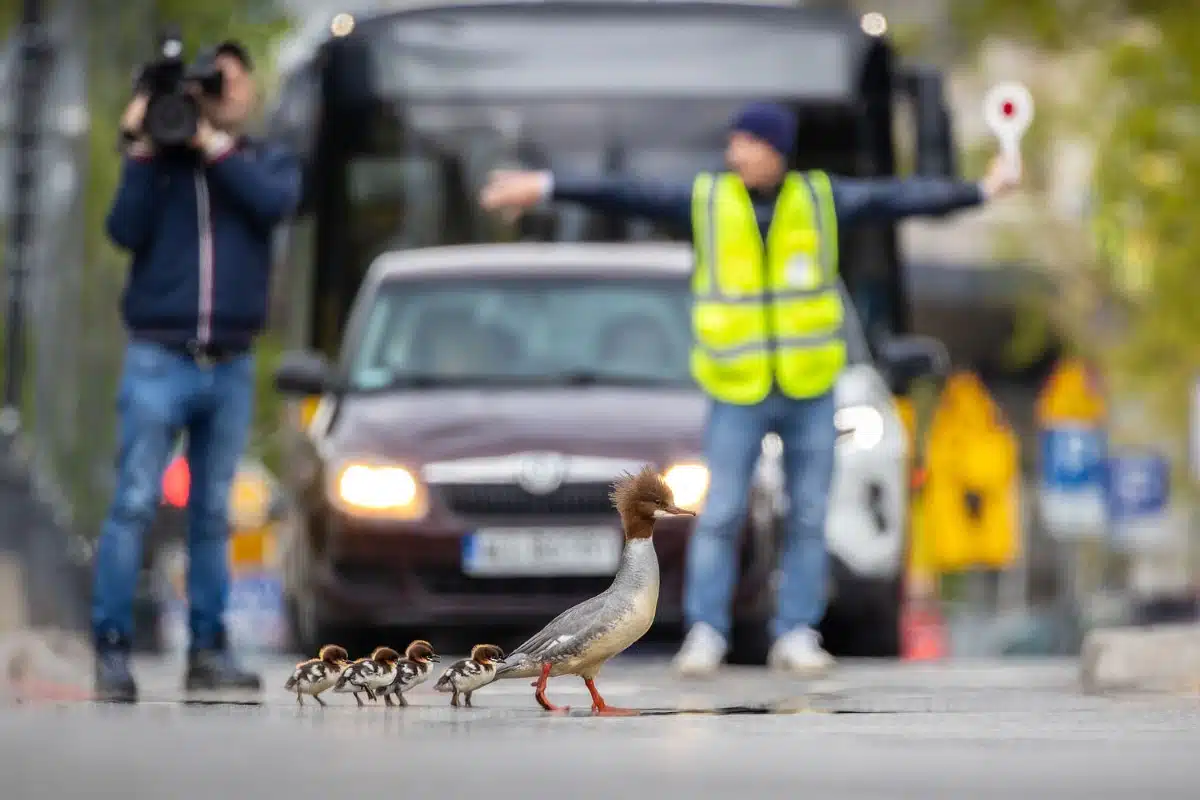
“New world” by Grzegorz Długosz (Poland). Runner-up, Man and Nature.
“For common mergansers (Mergus merganser) in Warsaw, the breeding season has become rather stressful. Ducklings hatch in a park about one kilometer away from the river Vistula. Each female duck has to relocate its ducklings to the river as quickly as possible because this is the only place in the park with food and shelter. To get to the river, the ducks must cross two canals and go through three underground passages created especially for this purpose. The final obstacle is a wide six-lane motorway. Every year, a group of volunteers help the ducks cross this dangerous road by holding up traffic. This image shows a duck crossing a smaller road because it refused to use the nearby dark underground passage. The volunteer blocks traffic while the cameraman captures the scene. Let's hope there will always be enough volunteers to stop traffic for ducklings.”
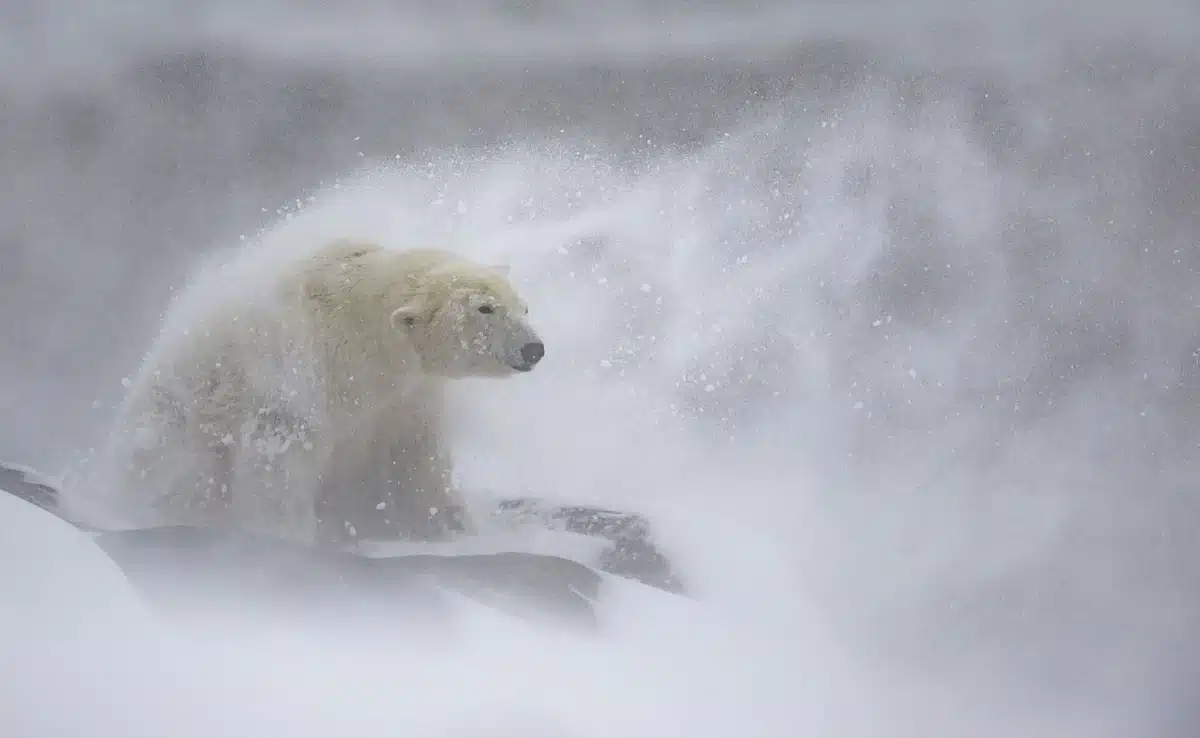
“Shaking off the snow” by Daniel Valverde Fernandez (Spain). Runner-up, Mammals.
“This picture was taken in Wapusk National Park on the coast of Hudson Bay, Canada during a heavy snowstorm in November 2022. With a single vigorous movement, the polar bear (Ursus maritimus) shakes off the powdery snow that has accumulated during the storm. A gust of wind picks up the snow and forms a decorative veil around the animal. It is truly amazing that these animals seem perfectly comfortable in such inhospitable conditions.”
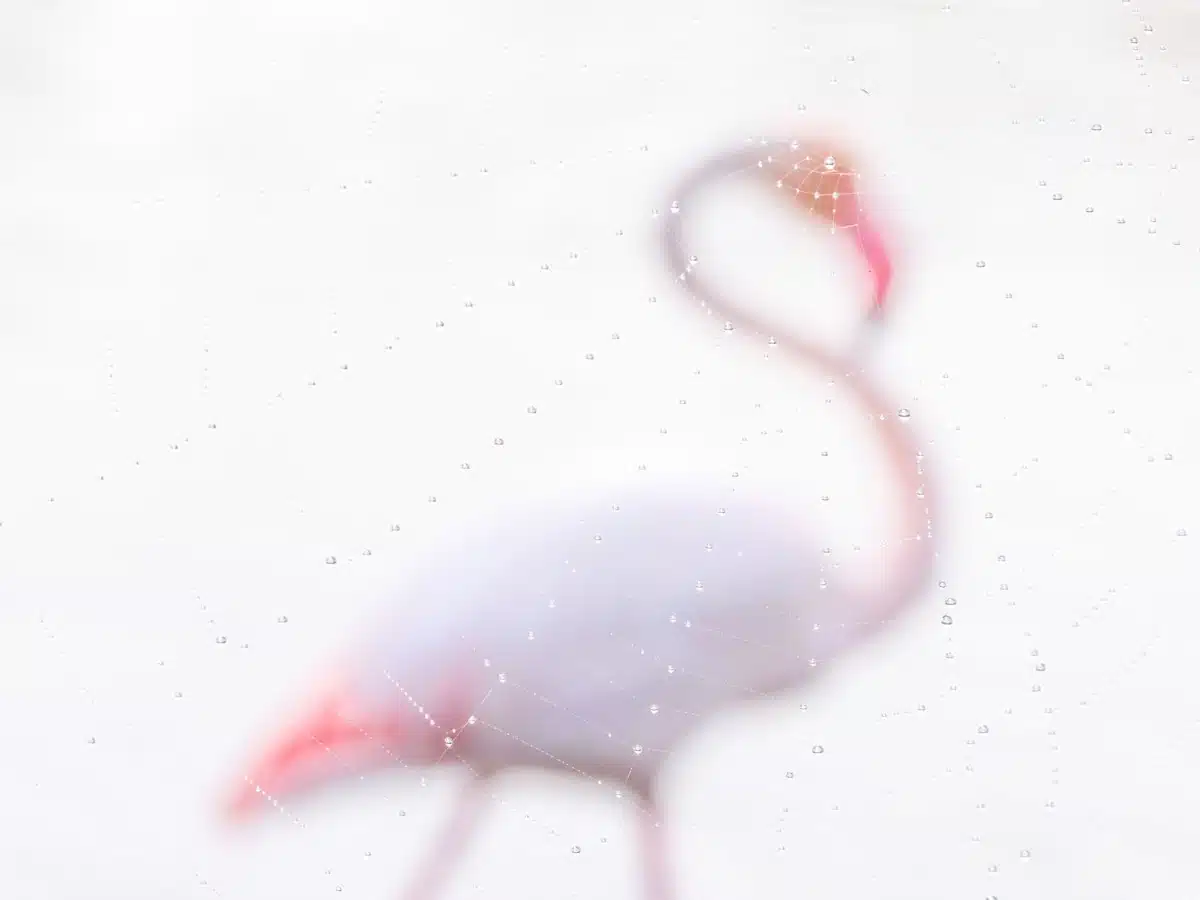
“Flamingo” by Jan Leßmann, GDT (Germany). Runner-up, Nature’s Studio.
“A greater flamingo (Phoenicopterus roseus) in the Camargue fog seen through a spider's web in the early morning light. This photo was taken in a joint effort by the photographers Hermann Hirsch and Jan Leßmann: together they developed the photo concept, tried out different angles, improved the approach and, in the end, were lucky enough to find a drop of water to represent the eye of the flamingo. The photograph is a result of communal “flow”.“
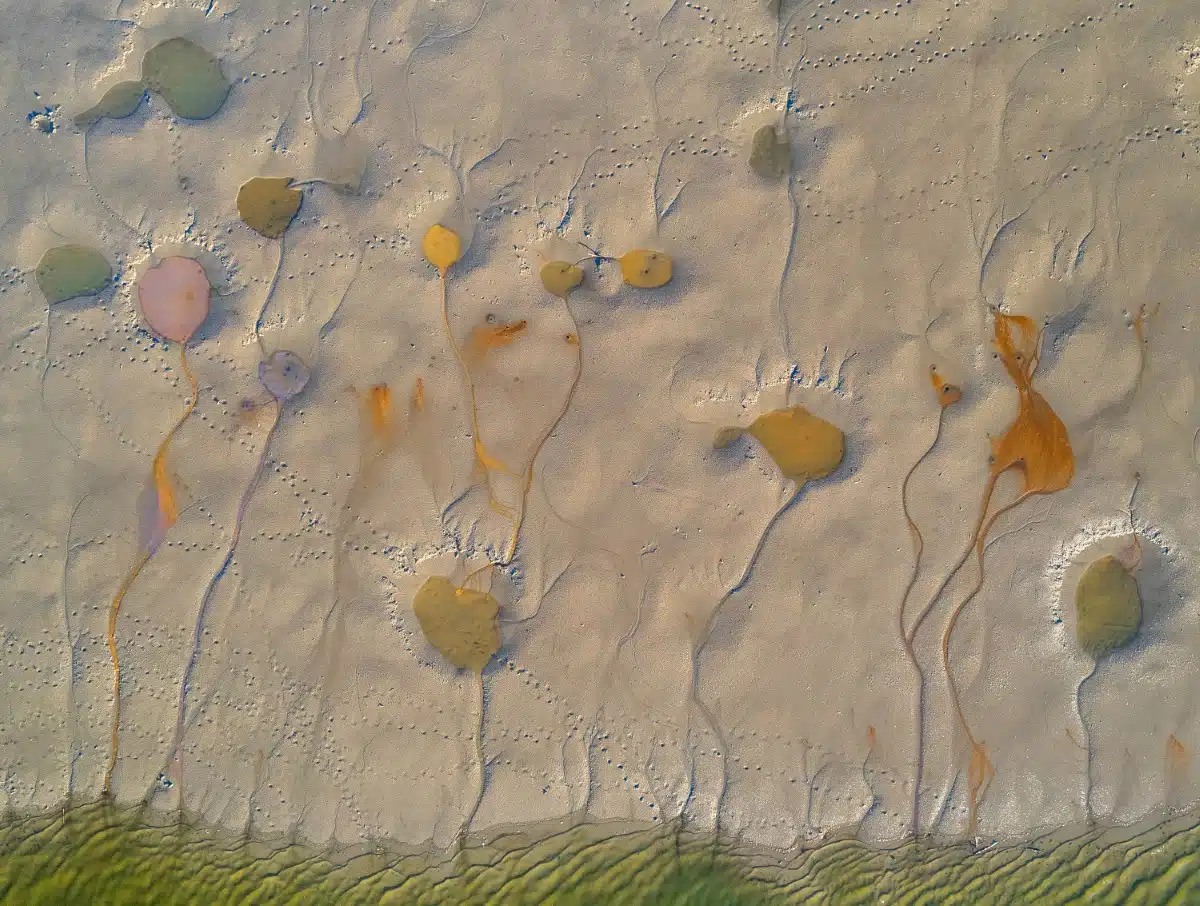
“Flowers in a drained lakebed” by Ádám Fáth (Hungary). Winner, Nature’s Studio
“A fascinating mosaic of puddles, each with a different color, adorn a drained lakebed. The diverse colors result from differing concentrations of single-celled algae left behind by the receding water. The eye-catching interplay of shapes and colors is not only visually captivating but also a silent testimony to the impact of human activity on the environment.”
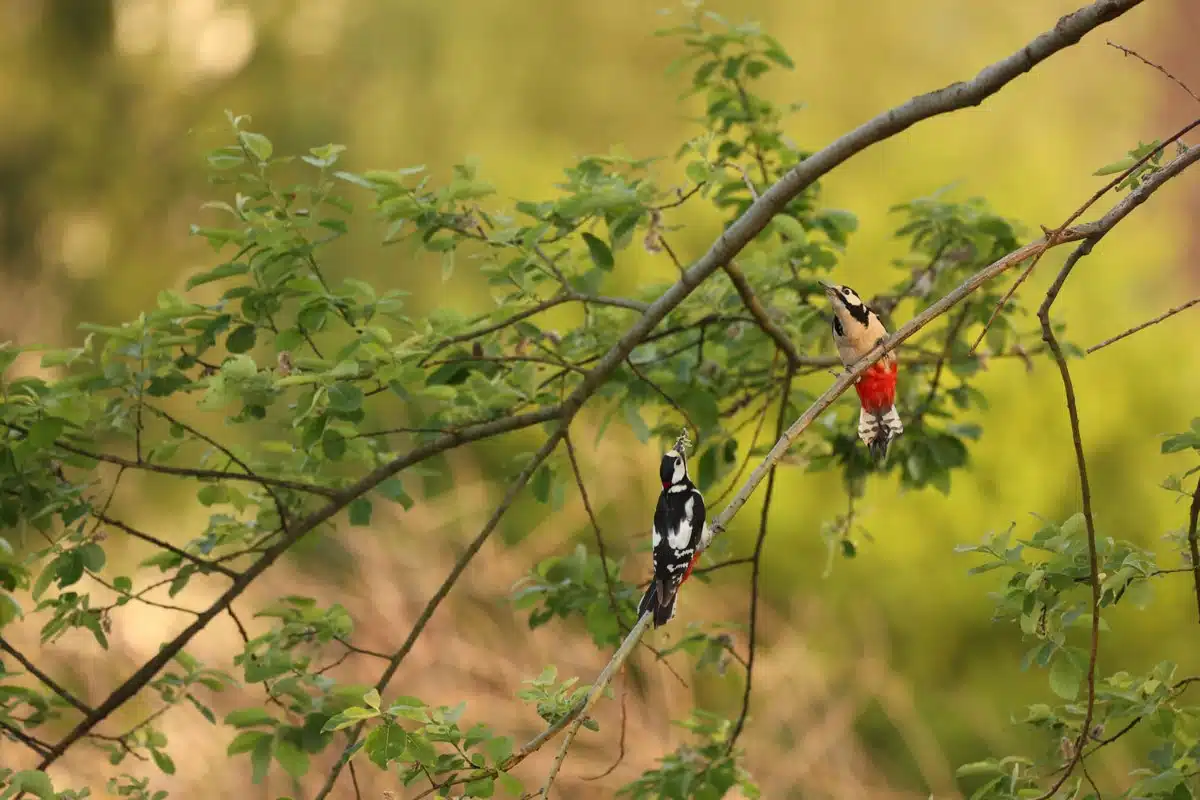
“Two great spotted woodpeckers” by Louis Werner, GDT (Germany). Winner, Young Photographers | 15-17 years.
“At six o'clock in the morning and armed with my camera, I went to the bushes behind our house in search of a red-backed shrike I had spotted the previous day. While I was sitting on a manhole cover and waiting, these two great spotted woodpeckers (Dendrocopos major) flew right by me. They obviously had some differences of opinion. I sat very still and took advantage of the moment. That's how this photo was taken!”











































































